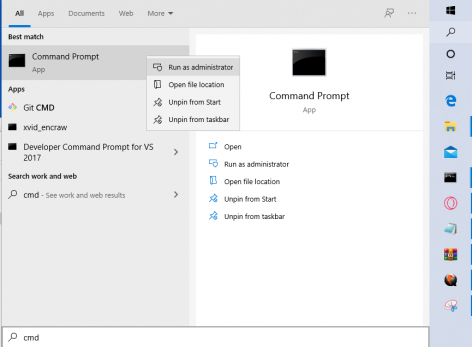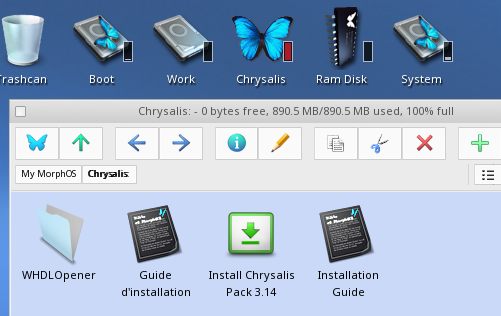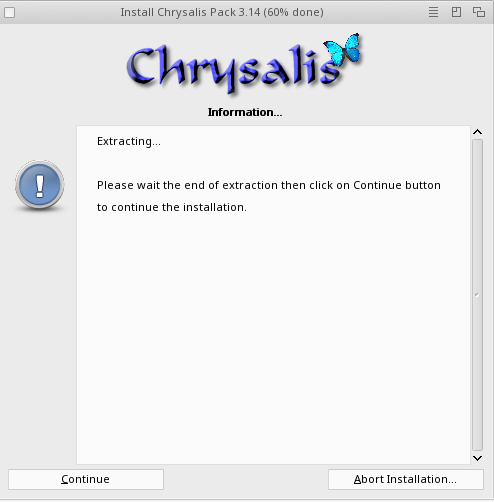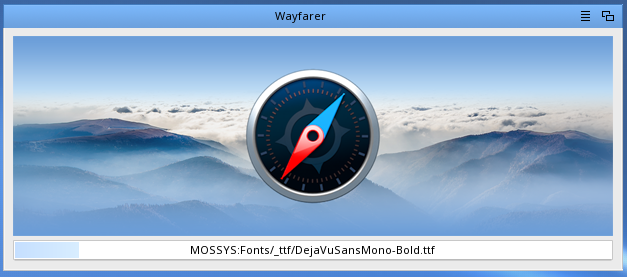MorphOS 3.14 and Qemu 5.2
I’ve been away from blogging about Amiga-related news but I’ve been watching (well, mostly). I thought I’d come back by giving the latest MorphOS 3.14 a whirl, along with the latest, matching Chrysalis pack and the latest and greatest Qemu on my updated laptop.
Since I’ve sold all my PowerMacs, I’ll need something to run it on. The latest Qemu releases have been supporting Amiga OS4.1 FE for Sam460 (something I hope to do in the future, to test against WinUAE with the somewhat limited OS 4.1FE Classic) and MorphOS on PowerMac.
So, I headed off to Qemu-land

And I clicked the 64bit link and got the latest exe installer. While it was installing, I went to get the latest MorphOS ISO image at https://morphos-team.net/downloads
The, knowing I’d like a pre-made pack of software and settings, I grabbed the matching Chrysalis Pack 3.14 (the version number always matches the MorphOS release number) at https://www.morphos-storage.net/?id=1603238
On this page: http://zero.eik.bme.hu/~balaton/qemu/amiga/#morphos, I knew I needed a new openbios file, which is linked under the Known Problems section. It’s a zip file so I extracted that to the qemu installation folder, as well as the MorphOS and Chrysalic ISO images.
Finally, before starting it up, I needed to create a black disk image to act as the “harddrive” onto which I would install the system.
Opening the DOS command line program (cmd.exe) as administrator (start typing it into the windows search bar, when cmd.exe comes up, right click and select ‘run as administrator’)
The command to create the morphos disk image is simple. Once the command prompt is up, change to the qemu install folder and run this command (I’m going for a 4GB disk:
This should be very quick. Now, the command to start up qemu before the harddrive is setup or the system installed will be different from when you run it from the installed harddrive. Also note that I’m using the experimental ati-vga driver over the normal one and upping the standard memory to what I read was the max MorphOS could achieve on qemu:
This starts up and auto-boots from the morphos 3.14 install cd and starts the harddrive installer after it confirms preferred language and keymap:
I’m not going to run through the installer, step-by-step as others have done. I just picked the default settings and set the right time and timezone.
One thing I did change as I found out the hard way, was to set the system partition to 2GB for the Chrysalis Pack.
After a bit, the installation will finish. Then, I quit the qemu program and change the startup commands to no longer load the morphos cd, but to boot from the harddrive image as well as “insert” the Chrysalis CD:
When it reboots, the Chrysalis CD is the blue butterfly. Double clicking this opens the folder and the green and white icon is the installer.
Double clicking that will start the intsaller, and then clicking the “start installation” button will kick off the first script, which will open a terminal output window, as it downloads fonts for OWB (even though it will install an early version of the new wayfarer browser later).
After that one is done, click the Continue button on the main installer will open a 2nd terminal output window. This will take a LONG time as they unpack over 800MB of compressed data. In the end, it will take nearly 1.5GB (hence the need to have more than the default 1GB System partition when using a 4GB disk).
After reboot, there are some differences right off. First, and most obvious, there is a new launch bar at the bottom of the screen:
These items launch the FlowStudio editor, an advanced shell/command-line interface, the new Wayfarer v1.8 web browser, the advanced email client, IRIS, an FTP transfer program, the Grunch software package installer, the SnapIt screenshot utility, the MPLayer multimedia interface and the shutdown scripts.
And right clicking on the desktop will reveal many new menu items at the top:
These have many/most of the shortcuts to the newly installed programs there for easy access.
Finally, in this blog post part (there will be at least a part 2 with more in-depth info on the other things found in Chrysalis and MorphOS), I wanted to get the headstart on Wayfarer. As with OWB before it, the first time it is run, it takes a LONG time to install all the fonts needed. Subsequent starts will go much faster.
Thanks for looking! I’ll do a part 2 soon.









